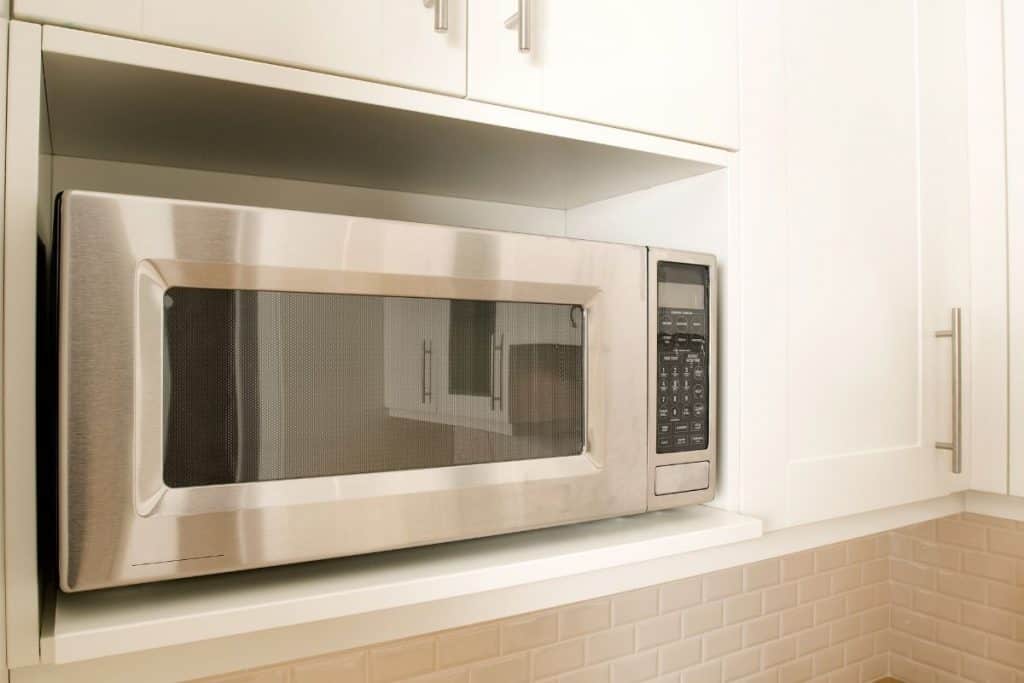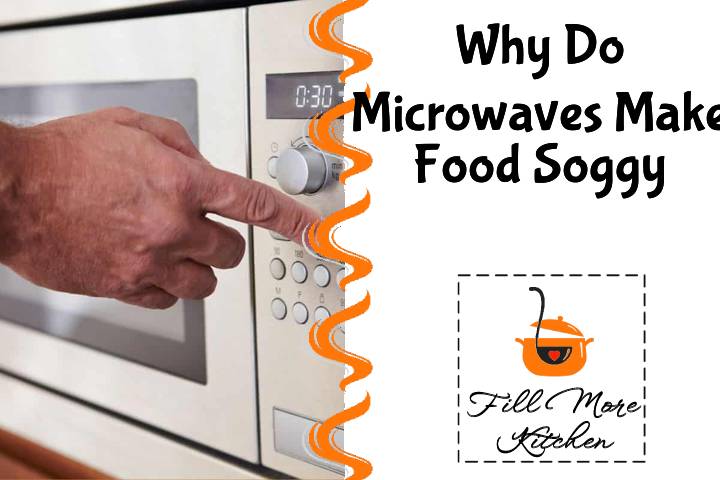Although microwaves are a fast and easy method to warm our food, they can occasionally cause it to become soggy, leaving us perplexed as to why our delicious meal turned into a damp disaster after reheating in the microwave.
Why do microwaves make food soggy? The movement of water molecules in the food caused by electromagnetic radiation used for heating generates heat that warms the food or liquid in the microwave, and since moisture cannot escape from the microwave, it remains in the food, leading to its sogginess.
Microwaves are a crucial component of our kitchens that we use on a daily basis, yet we seldom contemplate their function. Therefore, it would be beneficial to learn more about how they heat our food and comprehend the precise reason behind water movement in food, as well as methods to minimize sogginess.
The Science Behind It
Electromagnetic radiation is utilized by microwaves to heat our food, which is a concept that may be familiar from high school science class. The type of electromagnetic radiation employed by microwaves is known as microwaves.
Microwaves belong to the electromagnetic spectrum, which encompasses radio waves, infrared light rays, visible light waves, ultraviolet light waves, x-rays, and gamma rays. They are positioned between radio waves and infrared waves on the spectrum and operate at a frequency of 2,450 megahertz (MHz) in most microwave ovens.
Electromagnetic radiation is composed of electric and magnetic fields that are oscillating in a perpendicular manner, with their magnitude and direction changing every second.
The process of heating operates in the following manner:
- As soon as the microwave is activated, a magnetron vacuum tube converts electrical energy into microwaves that are then transmitted through a waveguide to the heating chamber.
- The energy produced by microwaves causes the water molecules in food to vibrate, with each molecule having a positive and negative end that oscillates to match the electric waves of the electromagnetic energy.
- When food is heated in a microwave, the water molecules in the food absorb the heat generated by the friction created in the heating chamber, resulting in the heating of the food.
Due to the lack of an outlet for the resulting moisture, microwaves can cause food to become damp and mushy.
When we cook food in an oven, it doesn’t result in sogginess because the heating process is different from microwaves; ovens heat the food externally and then transfer that heat to the inside of the food.
While conventional ovens allow the exterior of food to maintain its crispiness, microwaves heat all food simultaneously by bouncing around the heating chamber, making it challenging for food to retain its crispy texture.
It is commonly believed that microwaves heat food from the inside out, unlike ovens which heat from the outside in. Although this is true for ovens, microwaves heat all parts of the food simultaneously, but the heat distribution may not be entirely uniform as mentioned in one of the tips below.
Tips for Making Food Less Soggy

Having understood the reason behind microwaves causing food to become soggy, we can implement certain techniques and strategies to reduce its sogginess.
- To prevent microwaved pizza from becoming soggy, place a small microwave-safe container filled with water next to it. The water will absorb some of the microwaves that would have gone directly to the pizza, reducing its moisture content. However, it is important not to overheat the food.
You don’t want the H2O to reach a boiling point, or else it will produce steam, which would be counterproductive. To get a more detailed explanation of how this works, take a look at this article. You can then tell your buddies all about the dielectric constants of water.
Expert Advice: It is advisable to avoid boiling water when reheating pizza in the microwave.
Boiling water is an effective method to clean the interior of your microwave.
Place some lemon slices in the microwave and leave them inside with the door closed for a few minutes. By doing this, you can
make cleaning a breeze.
- To prevent food from becoming soggy, you can place a piece of parchment paper or a paper towel underneath it, which will absorb any excess moisture and prevent it from seeping into the food.
- It is important to be mindful of the cooking time, as foods with a greater amount of water content will typically cook faster due to their ability to absorb heat more quickly than those with less water content.
- To prevent soggy food, it is advisable not to place a small plate directly in the center of the microwave; instead, position it slightly off to the side or arrange the food on the outer edges of a large plate since the heating chamber does not distribute heat evenly, and the center is usually colder.
To reduce the sogginess of your food, it is important to consider variables such as the amount of water in the food and the duration of cooking.
Microwaving Different Types Of Food
When using a microwave, the outcome of reheating food depends on the type of food being reheated; pizza is more prone to becoming soggy, while pasta is more likely to become dry. Therefore, it’s crucial to consider the type of food being reheated as there is a delicate balance between achieving the desired texture and overcooking or undercooking it.
To avoid making food soggy, it is advisable to microwave different types of food separately and consider the power of the microwave when determining the appropriate cooking times.
While microwaving is a convenient way to reheat food, certain foods such as leftover french fries are difficult to microwave and may not yield good results. It is recommended to heat them in the oven instead or consume them while they are still hot, especially if you prefer them crispy.
In 1945, a radar engineer had an unexpected surprise when he realized that the microwaves had melted a candy bar in his pocket. This random discovery was the spark of inspiration for the microwave oven, one of humanity’s greatest inventions.
Final Thoughts
Microwaves offer a convenient and fast way to cook or reheat food, making them an ideal option for those who need a quick meal or want to warm up leftovers. Nevertheless, the convenience of using microwaves may come at the cost of compromising the quality of our food.
However, there are measures we can implement to alleviate this issue. Therefore, these are all factors that you should consider when reheating your leftover pizza slice and questioning why it turned out damp.
You can also check this video about “Why Do Microwaves Make Food Soggy?”
Check out our top 10 reviews!
Related posts
https://fillmorekitchen.com/should-a-pressure-cooker-let-out-steam-and-hiss/
https://fillmorekitchen.com/can-you-deep-fry-in-a-pressure-cooker/
https://fillmorekitchen.com/can-you-eat-green-beans-raw/
https://fillmorekitchen.com/is-there-cheese-in-cheesecake/
https://fillmorekitchen.com/why-is-my-oven-burning-things-on-the-bottom/



